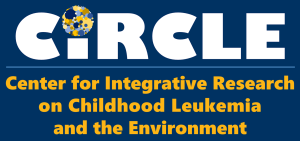Studies show Breastfeeding Helps Prevent Childhood Leukemia
Breast milk contains nutrients that are essential t

The Childhood Leukemia International Consortium (CLIC) – a group of researchers that combines data from over 30 epidemiologic studies from around the world (including our study in California) – has evaluated the relationship between breastfeeding and childhood leukemia. Based on questionnaire data collected from the mothers of approximately 7,400 children with leukemia and 11,200 healthy control children, breastfeeding for a period of 6 months or more was associated with a lower risk for childhood leukemia (a protective effect) in this largest study of its kind. Correspondingly, a study from Texas also showed that the risk of leukemia increased with the duration of formula feeding and with the age of introduction to solid foods – CLIC analyses are currently underway to replicate these findings (see CLIC study on breastfeeding for more information).
Recently, CIRCLE investigators Dr. Stephen Rappaport (at the University California, Berkeley) and Dr. Lauren Petrick (at the Icahn School of Medicine at Mount Sinai) used novel laboratory methods to measure thousands of molecules circulating in newborn blood, which may predict the subsequent risk of leukemia in children. They showed that linoleic acid and linolenic acid were higher in newborns who developed childhood leukemia than in newborns who went on to have healthy childhoods. Dr. Petrick summarized what her team found:
“… studies published by CIRCLE and other investigators had found that infants who were fed breast milk (colostrum) had lower risks of leukemia than babies on formula. After we detected the association between increased linoleic and linolenic acid levels and leukemia risk, we scoured the literature and found that these molecules tend to be more abundant in formula than in colostrum. This suggests that early feeding with formula may increase leukemia risk because it contains higher levels of linoleic and linolenic acids.”
Another benefit of breastfeeding is the passing of beneficial microorganisms from mother to child and this may also explain why childhood leukemia risks are lower among breastfed children (see results of this study in detail here and see CIRCLE’s latest research on the exposome here).
Overall, these findings provide additional reasons to encourage exclusive breastfeeding for at least 6 months, as recommended by the American Academy of Pediatrics for its many health benefits in children.
References:
Petrick LM, Schiffman C, Edmands WMB, et al. Metabolomics of neonatal blood spots reveal distinct phenotypes of pediatric acute lymphoblastic leukemia and potential effects of early-life nutrition. Cancer Lett. 2019;452:71‐78. doi:10.1016/j.canlet.2019.03.007
Rudant J, Lightfoot T, Urayama KY, et al. Childhood acute lymphoblastic leukemia and indicators of early immune stimulation: a Childhood Leukemia International Consortium study. Am J Epidemiol. 2015;181(8):549‐562. doi:10.1093/aje/kwu298
Schraw JM, Dong YQ, Okcu MF, Scheurer ME, Forman MR. Do longer formula feeding and later introduction of solids increase risk for pediatric acute lymphoblastic leukemia?. Cancer Causes Control. 2014;25(1):73‐80. doi:10.1007/s10552-013-0309-7



